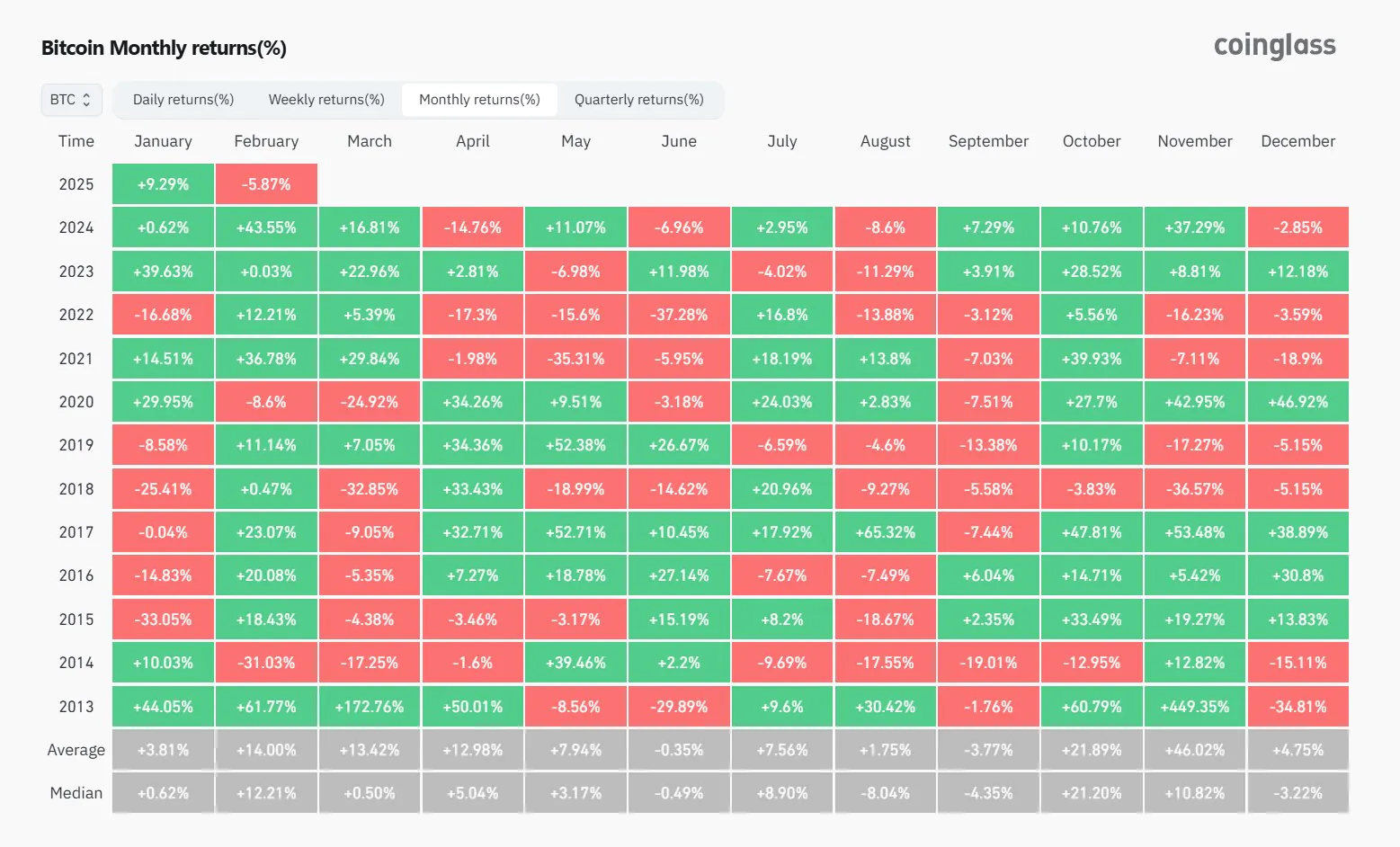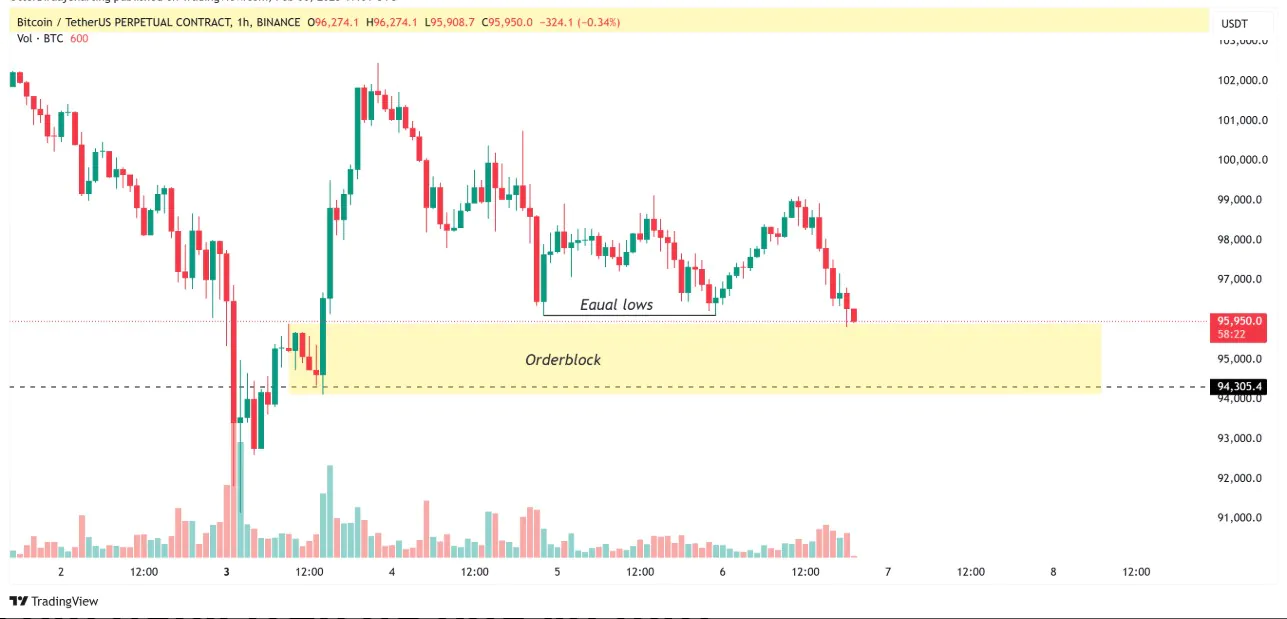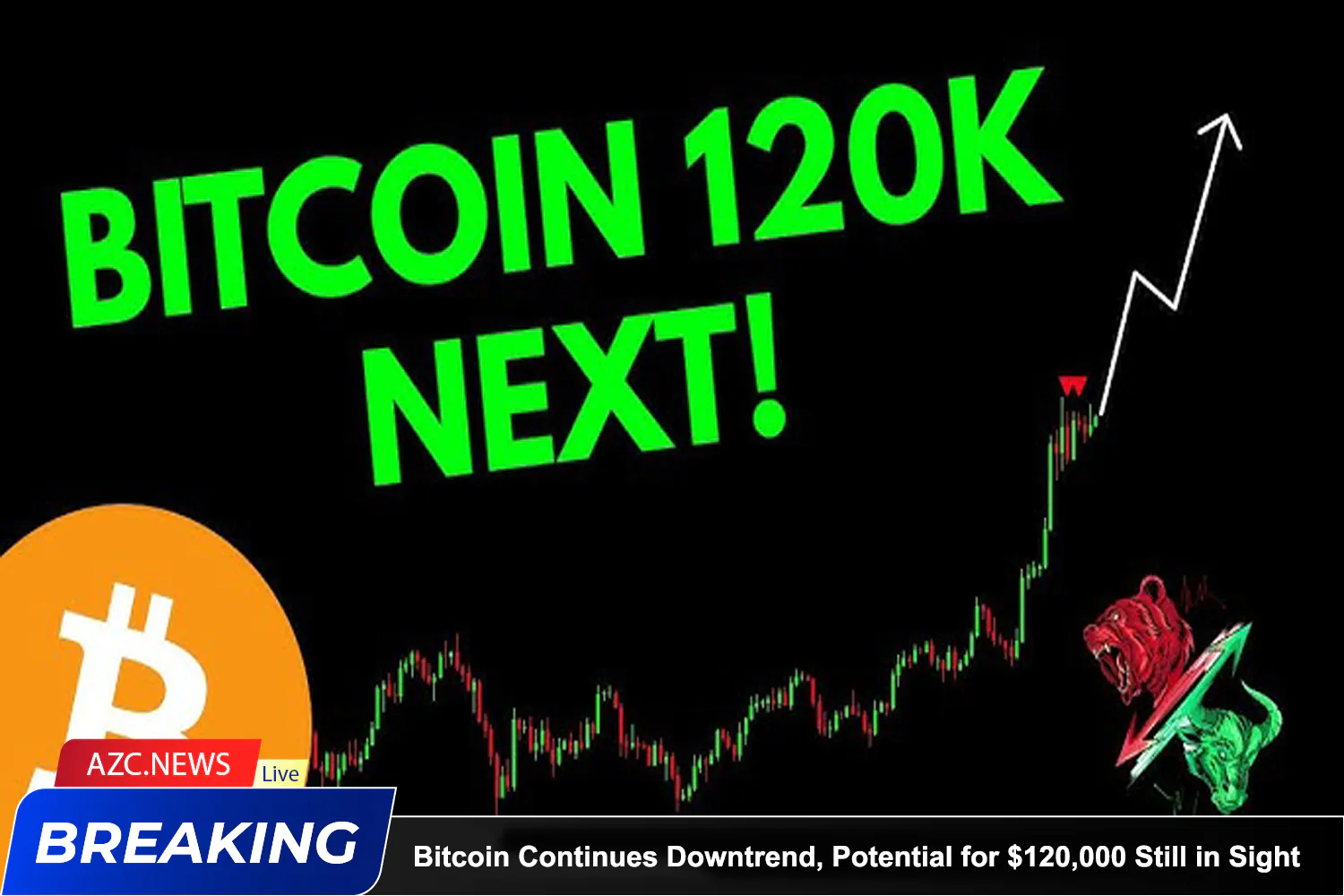Bitcoin has extended its downward trend this week, dropping to $96,500 in the past 24 hours. Despite testing the demand zone between $94,300 and $95,800 and sweeping liquidity around the $96,200 level, a bullish reversal has yet to materialize in the short term.
Analyst Mikybull suggests that, despite the current consolidation phase, Bitcoin could still reach a new all-time high of $120,000 if it follows the historical seasonal pattern observed between 2014 and 2018.
Historically, February has been a strong month for Bitcoin. Based on cyclical data, Bitcoin appears to be on track for a higher surge in 2025. Since 2013, the cryptocurrency has delivered an average return of 14.08% in February, with only two instances of negative performance in the past decade. Additionally, Bitcoin’s average Q1 return stands at 52.43%, lower than its historical Q4 average of 84% since its inception.

Market researcher Danny Marques also believes that Bitcoin’s recent dip to $91,000 may mark a local bottom.
“Bitcoin will hit $120,000 sooner than you think—and fast. This is how I view the next few weeks and months for those following the charts,” he stated.
However, despite the arguments supporting a local bottom, data analytics platform Alphractal warns that leveraged trading remains Bitcoin’s “biggest risk,” potentially leading to a retest of the $80,000 level.
In a post on X, the platform highlighted a significant increase in long positions in October 2024, creating a notable liquidity gap between $72,000 and $86,000—an area of relatively low trading activity. As a result, a sharp drop below $80,000 could trigger liquidations of long positions built since November 2024.

On the other hand, a cluster of short positions exists just above $111,000, opened in December 2024. However, it is important to note that the number of long positions currently outweighs short positions by a 2-to-1 ratio.
Read more: Trump Accused of Profiting from Memecoin
Additionally, the decline in open interest from $76 billion to $59 billion suggests a reduction in leverage usage across the market. This trend may indicate lower risk appetite among traders, potentially impacting Bitcoin’s price stability in the coming weeks.






